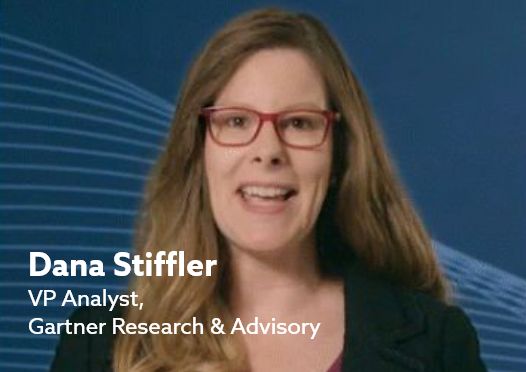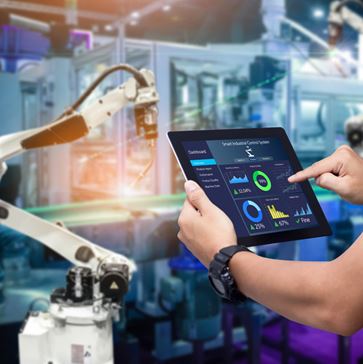
Preparing for the new abnormal - 4 takeaways from the Gartner supply chain conference
Paul Delbar - November 2, 2021

Following the disruptive months of 2020-2021, I think everyone might agree that there will be no normal again — it’s the ‘new abnormal’ we have to face.
From now on, supply chains will remain under the constant pressure of disruptive change, and not all of it is due to the pandemic. No wonder boardroom discussion is turning from supply chain excellence to subjects like agility and resilience. This was in evidence at last week’s highly informative virtual Gartner Supply Chain Symposium/Xpo™. The symposium confirmed the view that the most successful companies of the future will be those with the most resilient supply chain.
At OMP, we can see that leading companies are working hard on this issue. They want to be able to predict disruption before it happens, rapidly develop and compare a range of response strategies to make better value-based decisions, and execute the resulting plans even more efficiently than before.
There are 4 factors I believe to be crucial if these companies want to make their supply chains more resilient.
1. Visibility: getting insight into what’s happening
Blog post
Companies must get deeper insight into what is happening in every corner of their supply chains. Will suppliers be able to deliver critical parts to help meet surges in demand? Which parts of our product portfolio are at risk if any of this happens? What is the impact of using a bulk batch lot close to expiry? To achieve this full end-to-end visibility, companies need to build a broader telescopic digital supply chain twin.
This model of the supply chain must be so rich and granular that it will allow users to zoom in on operational detail or zoom out for more tactical or strategic information, depending on the issue being addressed. This will require the integration of huge amounts of data from various sources, both from within their own supply chains and from partners on the periphery of the network. It comes as no surprise, then, that Gartner is confirming that big data and advanced analytics will remain top technology trends for the future.

Blog post
2. Intelligence: insightful decision-making on top of touchless planning
Blog post

The increasing speed of decision-making requires companies to at least partially rely on some sort of touchless supply chain planning. Indeed, we see that supply chain leaders are looking at advanced data science, AI, and ML, not only to automate common planning issues but also to offer human planners a richer set of options for the more intricate or critical problems. Artificial intelligence will further facilitate turning data into insights, and insights into strategies and business value.
But more than that, I observed that the process of planning is also under challenge. Are monthly planning cycles still the best way to respond to the near-continuous stream of insights? How should companies balance centralized planning with distributed local expertise? How can organizations capture the years of experience of their planners and integrate it in the touchless planning logic? What issues can they tackle with robotic process automation (RPA)?
Blog post
3. Collaboration: long-term relationships instead of bid-driven contracts
Blog post
As the scope of the digital supply chain twin expands, decision-making will also change to allow partners to participate in the decision-making process and rapidly implement tailored, cross-company strategies. By integrating them into the digital twin, companies encourage and allow partners to jointly react to disruptions and act as one virtually integrated supply chain. This trend towards stronger intercompany collaboration has become a hot topic with the rise of the platform economy, where it is often hailed with the catch-phrase ‘from ego-system to eco-system’.

Blog post
But it also means that companies need to prove they are interested in building long-term, mutually beneficial relationships with their supply chain partners, even if that means abandoning the long-cherished tradition of bid-driven collaboration contracts. This is a fundamental change, which needs to be firmly supported by senior management.
4. Sustainability and employer awareness: resilience by design
Governments, shareholders, customers, and employees are pushing companies to be more aware of the role they play in facing global challenges. While traditional financial and operational performance measures are still relevant, they need to be balanced with more attention to people and the planet.
Blog post

Pioneers are complementing metrics such as EBIT and lost sales with ESG metrics, greenhouse gas emission rates, and employee well-being performance indicators. This evolution, which Gartner's Dana Stiffler has called 'pivoting to sustainable profit, can have a significant impact on every activity in the supply chain. Such new criteria may for example encourage companies to source materials and capacity more locally, and organize operations differently. This will reflect positively on how the company is perceived by customers, local residents, authorities, and other stakeholders.
Blog post
The evolution towards meeting such global long-term goals further pushes companies to consider innovative, out-of-the-box strategies that demand a greater capacity to simulate the supply chain’s impact several decades ahead. The telescopic digital twin should allow them to zoom out to the level of the supply chain network and run what-if scenarios there. Would it be too bold to say that optimizing the network design against sustainability criteria will also make the supply chain more resilient to the ‘new abnormal’?
What do you think? Which of these factors is at the top of your list?
If you would like to hear how OMP can help you to future-proof your supply chain, download our Unison Planning e-book.

Paul Delbar
Senior Marketing Manager at OMP BE
Biography
Paul spent most of his career in software development, product management and marketing and enjoys using technology to bring solutions to customers. No stranger to supply chain planning and cross-enterprise collaboration, he is always interested in hearing your story and sharing it with the OMP Community.





